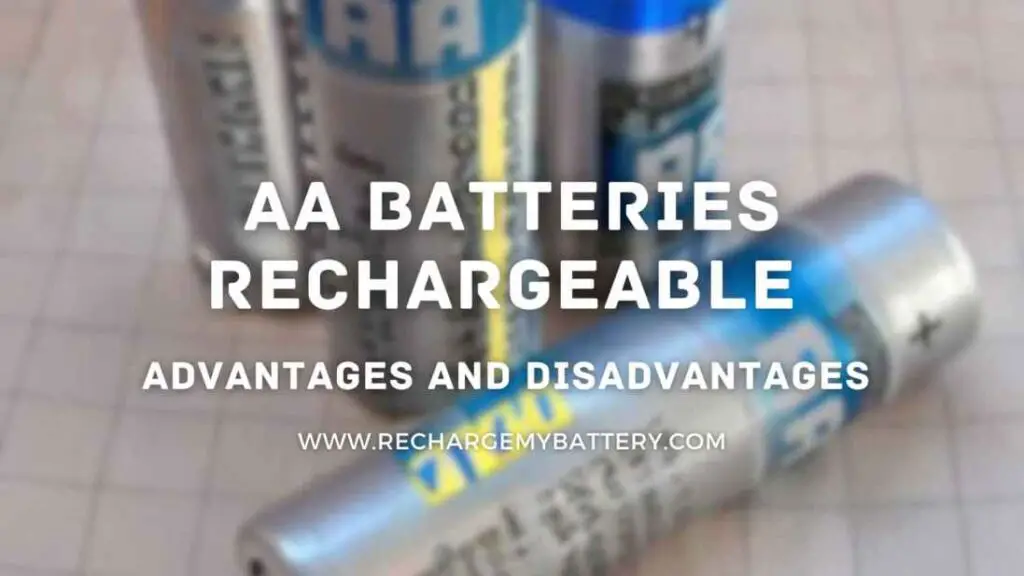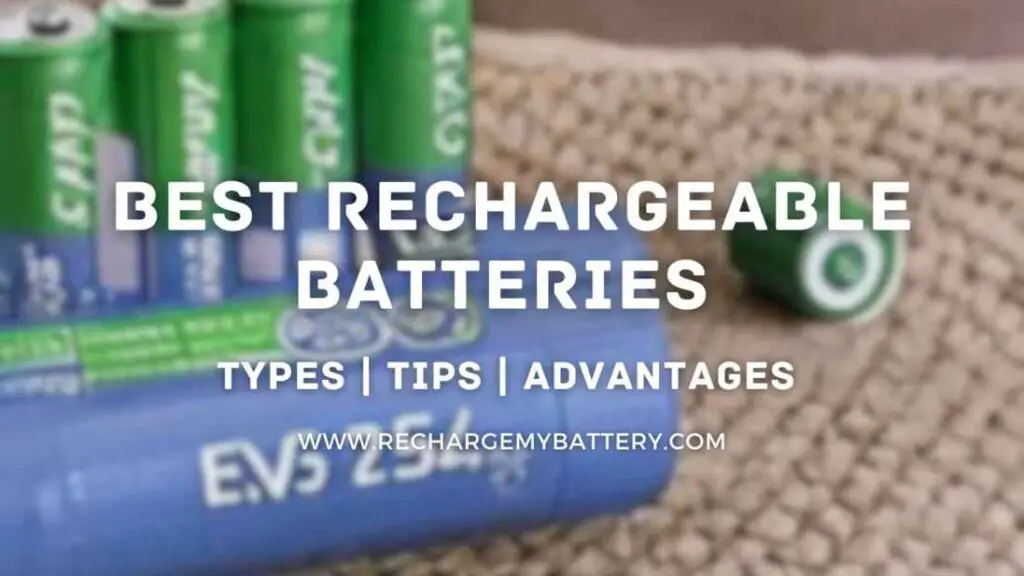In this article, we will guide you through the process of making a rechargeable battery using simple materials and steps. By the end, you’ll have a better understanding of how to create a sustainable power source that can be reused over and over again.
1. Introduction
In today’s world, where electronic devices play a vital role in our lives, having a reliable and sustainable power source is crucial. While commercial rechargeable batteries are readily available, creating your own at home can be a rewarding and cost-effective endeavor. By following the steps outlined in this article, you can make a homemade rechargeable battery that will provide power to your devices while minimizing waste and reducing your carbon footprint.
2. Understanding Rechargeable Batteries
Rechargeable batteries are energy storage devices that can be reused multiple times by restoring their charge. Unlike disposable batteries, which are designed for single use and then discarded, rechargeable batteries can be recharged by applying an electric current to reverse the chemical reactions that occur during discharge. This makes them an environmentally friendly alternative that reduces waste and saves money in the long run.
3. Required Materials
Before you begin the process of creating your homemade rechargeable battery, gather the following materials:
- Battery container (such as a small plastic or glass jar)
- Zinc and copper strips or rods
- Wire
- Sandpaper or a wire brush
- Electrolyte solution (can be a mixture of water and an electrolyte such as salt or vinegar)
- Multimeter or voltmeter
- Charging source (such as a solar panel or a low-voltage power supply)
- Safety goggles and gloves
4. Step-by-Step Instructions
4.1 Building the Battery Components
- Prepare the zinc and copper strips or rods by cleaning them with sandpaper or a wire brush to remove any oxidation or impurities.
- Cut the strips or rods into equal-sized pieces that fit inside the battery container.
- Attach a wire to each strip or rod by wrapping it tightly around one end.
- Place the strips or rods in the container, ensuring they do not touch each other.
- Secure the wires to the container’s lid using airtight seals or by drilling holes and inserting the wires through them.
4.2 Assembling the Battery
- Fill the battery container with the electrolyte solution, making sure the strips or rods are completely submerged.
- Close the container tightly to prevent any leakage.
- Connect the wires attached to the zinc and copper strips or rods to the corresponding terminals of the charging source.
- Leave the battery to charge for the recommended duration, asindicated by the manufacturer or based on your experimentation.
4.3 Testing and Charging
- After the initial charging period, disconnect the battery from the charging source.
- Use a multimeter or voltmeter to measure the voltage of the battery. This will give you an idea of its capacity.
- Connect the battery to your desired electronic device and check if it powers it successfully.
- When the battery is depleted, connect it back to the charging source and recharge it for the required duration.
- Repeat the testing and charging process as needed, ensuring that you follow proper safety precautions.
5. Safety Precautions
When working with homemade batteries, it’s important to prioritize safety. Here are some essential precautions to consider:
- Wear safety goggles and gloves to protect your eyes and hands from any potential hazards.
- Work in a well-ventilated area to avoid inhaling fumes from the electrolyte solution.
- Keep flammable materials away from the battery creation and charging process.
- Follow the manufacturer’s guidelines and recommendations for the charging source.
- Dispose of any waste materials and used batteries properly, adhering to local regulations.
6. Benefits of Homemade Rechargeable Batteries
Creating your own rechargeable battery offers several advantages:
- Cost-effective: Homemade batteries can be significantly cheaper than commercially available rechargeable batteries.
- Customizability: You have the freedom to design and customize the battery according to your specific needs and preferences.
- Educational: Making a homemade rechargeable battery is an excellent learning experience that enhances your understanding of battery technology and electrochemistry.
- Environmental-friendly: By reusing and recycling materials, you contribute to reducing waste and minimizing the environmental impact of disposable batteries.
7. Potential Applications
Homemade rechargeable batteries can power various low-energy devices, such as:
- LED lights
- Portable fans
- Small electronic toys
- DIY projects
- Low-power sensors
8. Tips for Optimal Performance
To ensure optimal performance and longevity of your homemade rechargeable battery, consider the following tips:
- Choose high-quality materials for better conductivity and durability.
- Maintain proper contact between the strips or rods and the electrolyte solution.
- Store the battery in a cool, dry place to avoid deterioration.
- Regularly test and charge the battery to keep it functional.
- Avoid overcharging or discharging the battery excessively to prevent damage.
9. Troubleshooting Common Issues
If you encounter any issues with your homemade rechargeable battery, here are some common problems and their potential solutions:
- Low voltage output: Check the quality and cleanliness of the strips or rods, ensuring proper contact.
- Insufficient charging: Verify the charging duration and ensure a stable connection to the charging source.
- Leakage: Tighten the container securely and use appropriate sealing materials to prevent leakage.
10. Maintenance and Longevity
To extend the lifespan of your homemade rechargeable battery, follow these maintenance practices:
- Regularly clean the strips or rods to remove any corrosion or buildup.
- Replenish the electrolyte solution if it evaporates or diminishes over time.
- Avoid extreme temperature conditions, as they can affect the battery’s performance.
- Store the battery in a discharged state if it will not be used for an extended period.
11. Environmental Impact
By creating and using homemade rechargeable batteries, you contribute to a greener environment by reducing the number of disposable batteries that end up in landfills. These batteries are generally composed of harmful chemicals and metals that can contaminate the soil and water. Making your own rechargeable batteries promotes sustainability and helps mitigate the negative impacts of battery waste.
Conclusion
In conclusion, building a homemade rechargeable battery is an exciting and practical project that provides a sustainable power solution for your electronic devices. By following the step-by-step instructions outlined in this article, you can create your own rechargeable battery using readily available materials. Homemade rechargeable batteries offer cost-effectiveness, customizability, and environmental benefits. They can be used to power various low-energy devices and serve as a valuable educational experience.
Always first think about prioritize safety, follow proper charging and maintenance practices, and dispose of waste materials responsibly. Embrace the power of DIY and enjoy the benefits of a homemade rechargeable battery.
Thank you.
FAQs
Q1. Can I use any type of container for the homemade rechargeable battery?
Yes, you can use various containers such as small plastic or glass jars. Just make sure they are suitable for holding the electrolyte solution and provide a secure and airtight seal.
Q2. How long does it take to charge the homemade rechargeable battery?
The charging duration may vary depending on the size and capacity of the battery, as well as the charging source used. It’s recommended to follow the manufacturer’s guidelines or conduct experiments to determine the optimal charging time.
Q3. Is it safe to use homemade rechargeable batteries with electronic devices?
As long as you follow safety precautions and ensure that the battery’s voltage matches the requirements of your electronic device, it should be safe to use. However, exercise caution and monitor the battery’s performance to avoid any potential issues.
Q4. Can I reuse the electrolyte solution in my homemade rechargeable battery?
Over time, the electrolyte solution may degrade or become contaminated. It’s advisable to refresh the solution periodically or replace it if necessary. Always ensure that the solution is clean and suitable for optimal battery performance.
Q5. How do homemade rechargeable batteries compare to commercial rechargeable batteries
Homemade rechargeable batteries offer a cost-effective and customizable alternative to commercial options. While commercial batteries often have higher capacities and more advanced features, homemade batteries provide an opportunity for hands-on learning and sustainable energy solutions.

